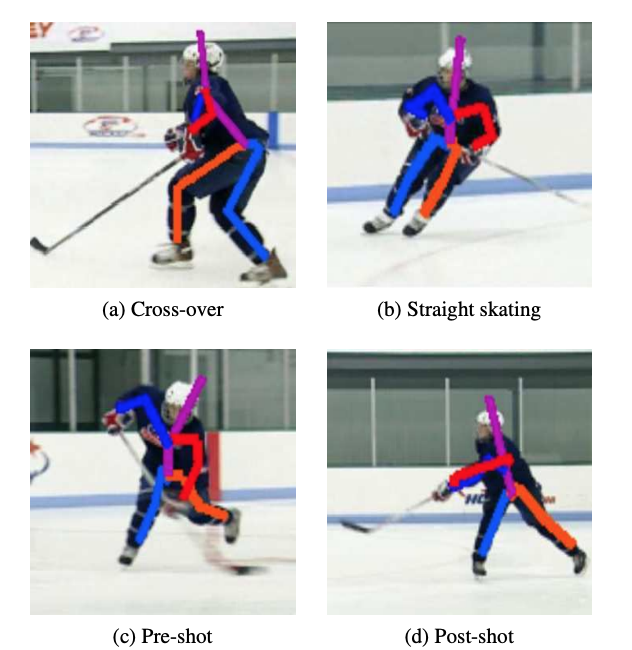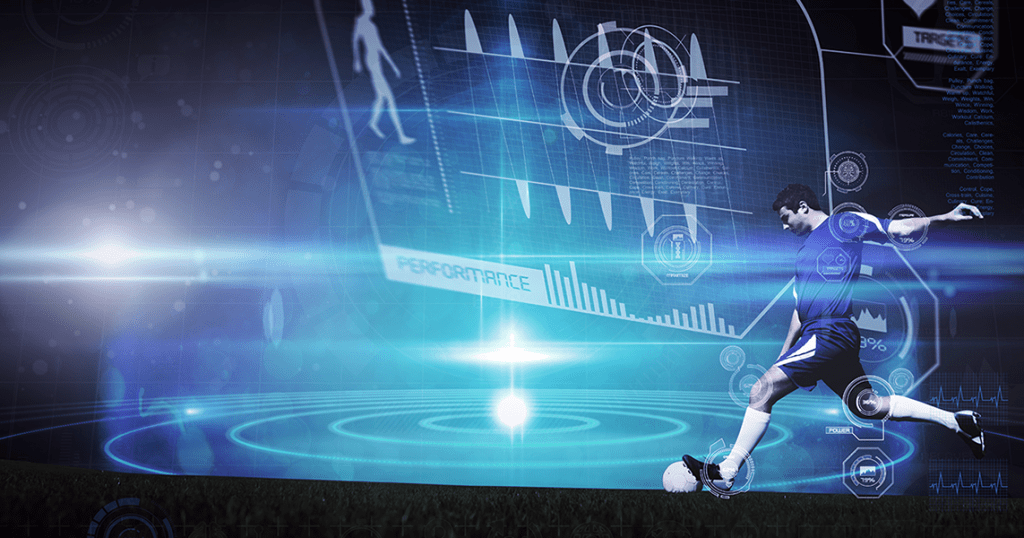One of the fastest-growing technologies in artificial intelligence is computer vision. The market size for computer vision alone was estimated at $7.04bn in 2020 — and it’s forecast to reach $18.13bn by 2028, a 14.07% increase.
What’s more, there’s little doubt that technologies like computer vision are playing a crucial role in changing the face of sports, with applications used in training and analysis to take athletes’ performance to the top level.
This article will cover the benefits of using computer vision in sports and surface some fascinating use cases.
Ready? Let’s dive in.
Read also: 5 Ways Computer Vision Is Transforming Retail Industry
4 Key Benefits of Computer Vision in Sports
Computer vision plays a role in every aspect of sport, from the viewing experience to training to how referees make decisions. Let’s look at four typical use cases from across the sports world.
1. Improving the viewer experience
What would sport be without fans cheering their teams on at every match? Now, thanks to computer vision, broadcasters can enhance the fan experience. Firstly, cameras now know where to focus, automatically finding the action instead of simply offering a panoramic view of the whole pitch.
Secondly, clubs can monitor fans during the games and analyze their emotions, which they can use to build statistics about fan engagement, helping them understand if they need to improve the fan experience.
2. Enhancing training sessions
To make improvements, players need to be able to learn from mistakes: theirs as much as their opponents. That’s why automatic sports analysis and insight-based analysis are essential to the training process. No one can spot mistakes if training without a coach, while coaches can easily miss important details the first time around.
Computer vision can help them analyze player performance. Meanwhile, object recognition software can follow an athlete and highlight any weaknesses in their technique. Based on this, athletes and teams work to remove bad habits once and for all.
3. Checking referee decisions
Think back to the last time you saw players surround the referee, angry at a supposed ‘bad’ decision. If only there were a way to check if the ref made the right call. Thanks to computer vision, we can do just this using 3D simulations and video inspection to check things like offsides, outs, goals, and photo finishes in races. Forget controversial calls; technology is here to ensure every decision is the right one.
4. Keeping athletes safe
As we all know, sport is a great way to keep healthy, but it’s not without risk. But thanks to computer vision, we can help prevent accidents or even save lives (you’ll learn about a particular example for this later in the article). Algorithms can analyze large data sets, including information on player position, game type, equipment used, playing surface, environmental factors, and player injury, then help improve injury treatment and rehabilitation, ultimately enabling injury prevention.
Furthermore, by understanding the factors that result in injury, officials can introduce changes to better protect athletes. Interestingly, data has influenced the NFL kickoff rules, resulting in a 38% decrease in concussions at restarts.
After all, there will always be occasions when people don’t see everything, or we may not spot a situation until it’s too late. Technology is often one step ahead, so it can alert us to the danger and prevent catastrophe from happening at all.
Read also: AI and Marketing: How To Boost Brand Marketing With Image Recognition Software
6 Real-life Examples of Using Computer Vision in Sports
We’ve seen how computer vision can enhance the sports experience. Not, it’s time to turn to some novel use cases.
Here are six ways you can use computer vision in sports today:
1. Mapping athlete positions
Events like marathons and cycling races can involve thousands of participants. So how can you find your favorite athlete amongst the masses? Computer vision can analyze footage and identify individuals based on attributes like their shirt number. This can also help organizers auto-update spectators about the results.
See how image mapping works in this 45-second video.
2. Real-time player tracking
Sports analysis might help improve your performance in the next event, but real-time tracking can boost it right away. For example, Sentio is a soccer player tracking system that uses computer vision and machine learning algorithms. And it can track player and team performance in real-time by attaching each cell in video footage to a unique ground point, represented by a fixed image patch. What’s more, each team has its own cell color, making it easy to distinguish one from the other.
Another application used in soccer games lets spectators see basic statistics, like each team’s possession or the distance covered. And this is all possible thanks to real-time tracking and analysis of the collected data.
3. Ball tracking
![]()
If you’re a tennis fan, we’re sure you’ll know HawkEye. The ball-tracking technology is everywhere, helping tennis umpires know which side of the line the ball landed. Ball tracking is now one of the most popular sports AI applications, offering two core use cases:
- Showing spin and direction: helping athletes understand how their stance affects their ball striking;
- Supporting umprire calls: not sure if the ball was in or out? Ask Hawkeye.
4. Opposition analysis
A well-thought-out strategy is one of the most important factors in winning. But how can coaches come up with one? Usually, they’ll rely on footage of their opponents, and software such as GAMEFACE can help.
The GAMEFACE analysis process consists of three simple steps:
- Upload match footage
- GAMEFACE analyses it using AI
- Custom reports highlight key insights
The software enables coaches to analyze the opposition, then formulate an effective match strategy based on concrete data.
5. Action recognition
Action recognition in computer vision is a fundamental problem in sports video analysis. But it can help coaches, analysts, and spectators alike. On the one hand, it gives coaches a way to evaluate player performance. On the other, it allows broadcasters to track the action.
By analyzing an athlete’s movements, coaches can improve a player’s technique. At the same time, pose recognition helps camera operators judge where a player will move next and track the action more accurately.

6. Drowning-risk prevention
SwimEye is an AI-based drowning-risk detection system that spots struggling swimmers and raises the alarm. It works thanks to underwater cameras that monitor the pool, using object recognition software to spot signs of distress. If the cameras see something, lifeguards get an alert, and they can act immediately to prevent a tragedy.
Read also: How to Use Image Detection In Webinar Platforms
Could computer vision help you?
As you can see, there are plenty of ways to use computer vision applications in sports. But you need to know how to deploy them to get the best results.
With that in mind, you may want to work with experienced AI professionals when creating a solution for your business. We can advise you on the best path forward, guaranteeing you use the technology to maximum effect.
At DLabs.AI, our highly skilled experts can help you develop advanced AI solutions, so feel free to schedule a call if you’d like professional advice.





